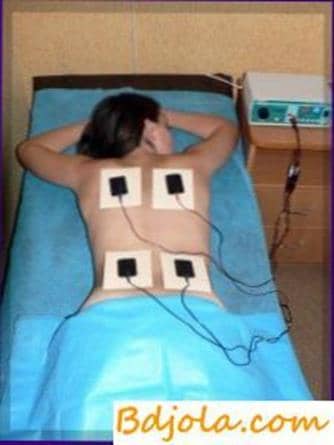Electrophoresis and bee venom

Electrophoresis is widely used in the clinic of internal, nervous, surgical, gynecological and other diseases. This method is based on electrolytic dissociation and from all modes of drug administration through the skin is the best. Electrophoresis is convenient in that, without violating the integrity of the skin and without causing painful irritation (except for a small reddening of the area of the skin subjected to electrophoresis), changes the overall reactivity of the body, which is due to the influence of direct current and apitoxin. Treatment with this method is carried out in the physiotherapy rooms of many hospitals and even polyclinics.
In view of the fact that apitoxin contains substances introduced into the body by electrophoresis from the anode and from the cathode, a solution of the crystalline apitoxin obtained by the method described above without harm to the bees was introduced from both poles. Thus, all pharmacologically active components of apitoxin enter the body.
Two electrodes with gaskets of 150-180 cm2, moistened with physiological saline and apitoxin solution, are applied to the hands or feet and connected to the anode and cathode of the galvanic apparatus. Electrophoresis of apitoxin can be carried out clinically daily, and in polyclinic-every other day.
On the first day 3 ml of a solution containing 6 units of apitoxin (the poison of six bees) are poured onto the gaskets, on the second day – 8 units, in the third – 10 and so on until the 20th day – 10 units each. The current strength is 5-10 mA, the duration of the electrophoresis procedure is 5-15 min. The complete course of apoptosis electrophoresis involves 15-20 procedures.
In Bulgaria, apitoxinotherapy in the form of electrophoresis was used in the balneological sanatorium of Kyustendil for 211 people with diseases of the peripheral nervous system, rheumatism
The results were encouraging: 32 out of 108 people with diseases of the peripheral nervous system (radiculitis, neuritis, plexitis) completely disappeared pain, fully restored function and recovery came; 64 pains decreased significantly, patients were discharged with improvement. Within 1-2 years, there was no recurrence of the disease. Of 32 patients with rheumatoid arthritis as a result of electrophoresis of apitoxin in 17, the state of health improved significantly, pains in the joints decreased, and their mobility was restored. Almost all patients improved their state of health, appetite and sleep.
The results of the treatment allow us to conclude that bee venom blocks the conductivity of the sensory nerves and thus helps to reduce and even stop neuralgic and rheumatic pains, dilates the small blood vessels, thereby improving the blood supply of tissues, stimulates blood and lowers cholesterol in the blood.
Electrophoresis and bee venom
